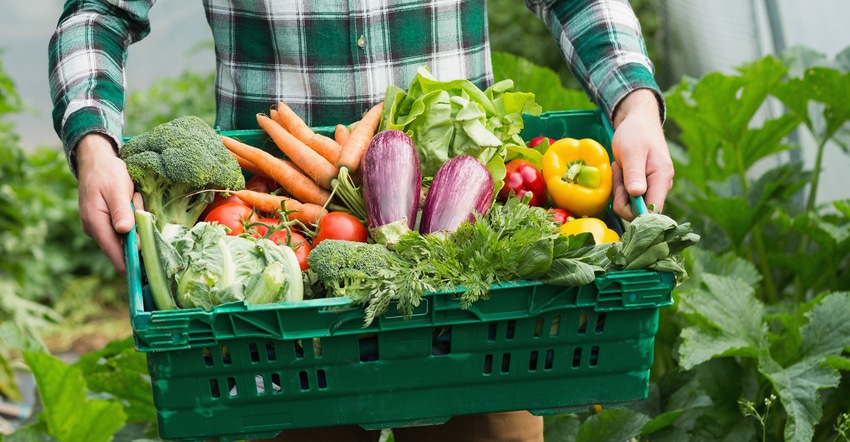June 13, 2017

Organic acres are on the rise. But slow supply-side production to rising demand leaves processors and retailers struggling to secure available supplies, according to a new CoBank report.
The dollar value of U.S organic produce sales doubled from 2011 to 2015, with annual sales now topping $5.5 billion. Currently, 15% of all U.S produce sales are organic. While organic acres have nearly doubled over the last decade, that pace of supply-side growth has been sluggish relative to demand.
“Sales of organic fruit, vegetables and nuts have increased dramatically in recent years, and this growth trend will continue," says Christine Lensing, CoBank senior economist for specialty crops. "More than half of U.S. households are now purchasing some organic produce. But for a variety of reasons, production hasn’t been keeping pace with demand, and the supply gap is widening."
More domestic growers would need to transition to organic to bridge the supply gap. But Lensing concludes that given current consumption trends and the length of the required transition period, organic produce supplies will likely remain under pressure over the next three to five years.
Food companies and large retailers have increased imports to meet demand and secure supplies throughout the year. Import volumes of selected organic specialty crop items soared by almost 800% from 2011-2013 before leveling off.
Are 30% to 50% premiums enough?
“The market for organic produce will continue to grow, creating opportunities for growers," adds Lensing. "However, transitioning to organic comes at a cost and isn’t without risk. Steady domestic supply growth will be dependent on consistent, wide premiums that reward growers for accepting the elevated risks associated with organic production."
Despite premiums of 30% to 50%, the perceived risks associated with transitioning to organic are often a significant deterrent for conventional growers. Key among those risks is the absence of an established market that offers transitioning growers a premium price during the lengthy three-year transition period. Concerns about market and price sustainability, additional labor requirements and absence of support systems such as subsidies or grants compound grower reluctance.
The organic industry recognizes these challenges and is taking steps to help alleviate some of the pressures on transitioning growers. A new partnership between the Organic Trade Association (OTA) and the USDA has been established to provide guidance to growers transitioning to organic production and is laying the foundation for a transitional organic market.
"Initiatives such as the transitional organic certification program and the formation of additional strategic partnerships should serve to encourage more domestic organic production and help address the marketing challenges created by supply shortfalls,” adds Lensing.
A video synopsis of the report, "Mind the Supply (Gap): Meeting the Growing Demand for Organic Produce" is available on the CoBank YouTube Channel.
Source: CoBank
Editor’s note: Unfortunately, this gap has also increased fraudulent certification both domestically and by exporters to the United States. See Organic labeling fraud booming.
You May Also Like




